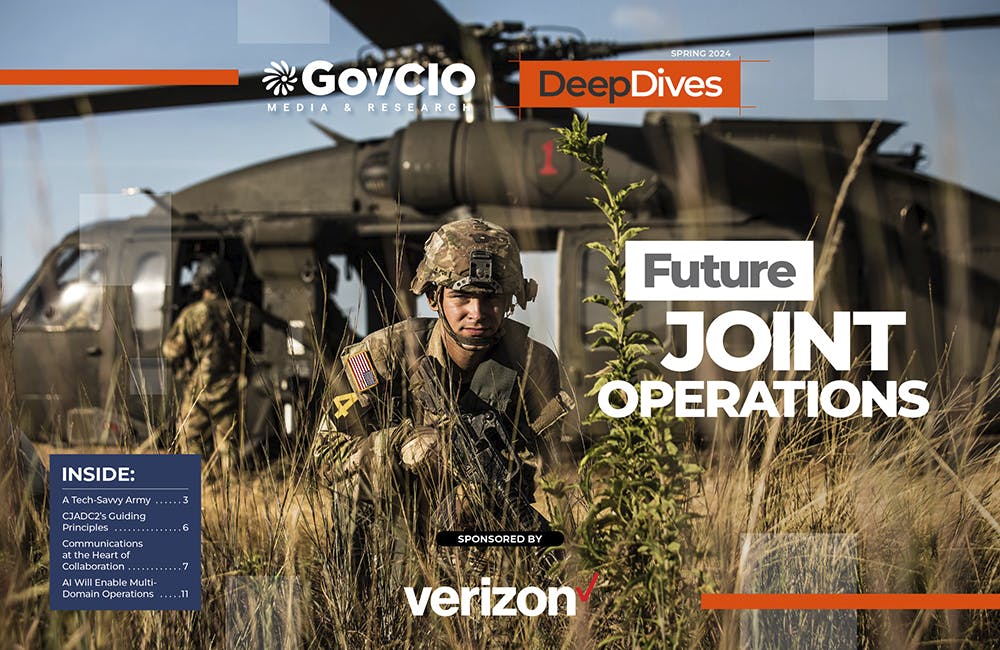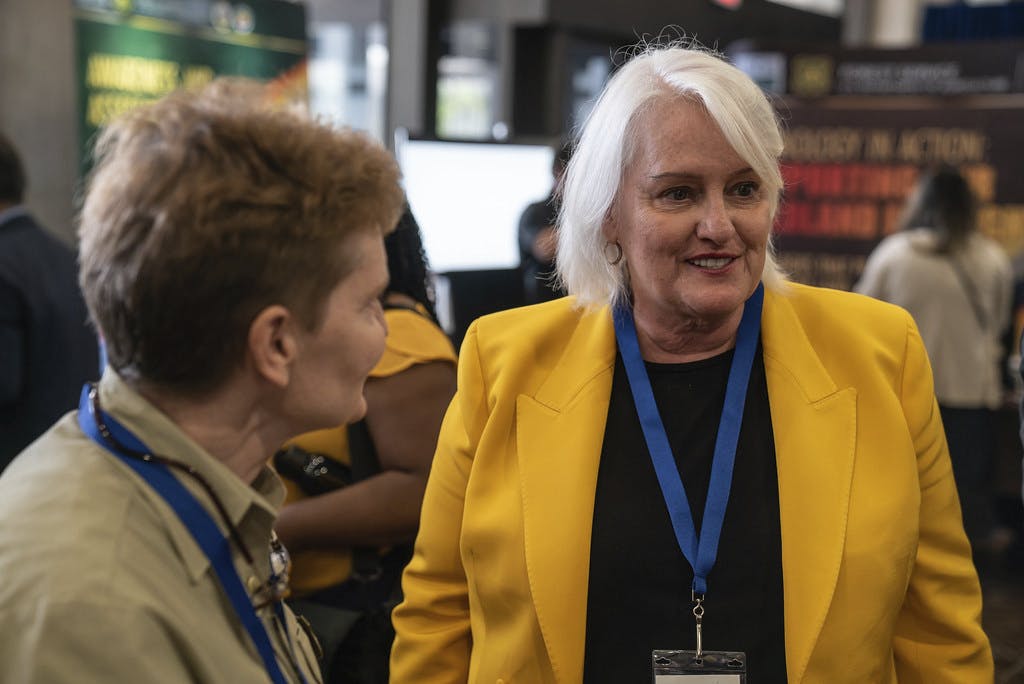IT Leaders Share AI Test Cases and Potential for Growth
AI moves beyond ‘just an IT issue’ as it shows potential to transform workforce, veterans and health fields.

AI will help the Department of Labor better accomplish its diverse mission set, which includes labor statistics, 401(k) protections, mine safety, the veterans’ transition assistance program, temporary work visas and more, said CIO Gundeep Ahluwalia. Across these areas, he said, AI will “allow citizens to get better services from the department” and allow employees to spend most of their time on high-value work instead of data entry or other low-value tasks.
“I get this so many different times when I go across my building,” Ahluwalia said at the GovernmentCIO Media & Research AI and RPA CXO Tech Forum. “People have three or four screens open, and they’re trying to make sense out of some amount of data and throw it to a spreadsheet … Instead of enabling them, it’s hurting them.”
Ahluwalia predicts that using AI to codify and analyze data will not only allow the department’s economists to focus on that higher-level work, but also lead to more efficient and effective service across its mission areas.
One area where the agency is using AI is to code workplace injury data at the Bureau of Labor Statistics, a job that is now automated with 80% accuracy, Ahluwalia said. This frees up BLS statisticians to address the 20% the program is unable to handle or that require second-level review. Labor is also running a pilot program to match military occupational specialty (MOS) codes with available positions and apprenticeships in the civilian workforce to better match veterans with job opportunities.
There is also tremendous potential for AI in improving veteran experience and health care, as evidenced by use cases at the Department of Veterans Affairs and the Johns Hopkins University hospital system.
In response to the 2014 incident involving extremely long wait times at its hospitals, the VA created the Veterans Experience Office, not only to prevent such shortcomings from happening again, but also to focus on continuously improving the quality of care veterans receive from all three branches of the VA. The Veterans Experience Office used “true AI,” explained Director of Enterprise Management and Design Anil Tilbe. This ensures every veteran across the U.S. receives the same level of support and predicts where discrimination “may, could or will take place.”
“It was a truly transformational implementation,” Tilbe said. “It’s still being led by our Deputy Assistant Secretary Harvey Johnson, and that work to deploy AI continues today.”
Moving forward, he added, he thinks about AI as an enabler of both operational capabilities — to deploy medical services and benefits — and enforcement capabilities to detect waste, fraud, abuse and discrimination.
The Veterans Experience Office has put requirements and carefully defined use cases ahead of the capabilities, Tilbe explained. This ensures that everything is focused on human-centered design. Using AI capabilities to better shape the veterans experience for female veterans is one major initiative the VA is focusing on next, while simultaneously reconfiguring AI to think about how it affects women versus men.
“When we think AI capabilities, and when we build AI capabilities, we have to fine-tune the engine, so that it conforms and evolves in the language that you’re building to,” Tilbe said. “If it’s in health care and for women, it should think differently …versus how it thinks about what the problem is for male veterans.”
AI can also assist doctors with pattern recognition, one of the most important skills for a clinician to have, said Dr. Tin Yan Alvin Liu, an ophthalmologist and assistant professor at Johns Hopkins University.
“The recent rise in AI, specifically in the form of deep learning, is very good at pattern recognition,” said Liu. “The rise of deep learning is a natural marriage to medicine.”
On a larger scale, Liu predicted that AI will improve the ability to screen patients, accurately diagnose them and refer them for the proper treatment, all of which will improve patient care.
“It’s no longer science fiction,” Liu said, adding that a fully automatic AI system to detect diabetic retinopathy — a retina condition affecting about 10% of diabetics that can lead to blindness if not detected and treated — was recently deployed.
“Right now, nationwide, in the best-case scenario, about 50% of people who are supposed to get an eye exam actually get one,” Liu explained. The FDA-approved system, developed at the University of Iowa, can be operated by “someone with minimal training,” so it can be easily deployed at general practitioners’ clinics. The system images the patient’s retinas and can immediately determine if they have diabetic retinopathy and require further treatment without the input of a trained eyecare professional. Liu and his team plan to incorporate the system within the JHU health care system to increase the screening rates and prevent complications from occurring.
All three panelists agreed that as AI grows, it is the responsibility of the entire organization to ensure it is used accurately, ethically and with minimal bias. They also acknowledged this was a chance to avoid repeating previous IT mistakes.
“I encourage everybody in this room and everybody at the department to think about [it],” Ahluwalia said. “The pace is much higher … so we all have a shared responsibility, and we all should think about what we are adopting, what pace we are adopting and what guardrails we should build around it.”
This is a carousel with manually rotating slides. Use Next and Previous buttons to navigate or jump to a slide with the slide dots
-

Cyber Incident Reporting Regulation Takes Shape
An upcoming CISA rule aims to harmonize cyber incident reporting requirements for critical infrastructure entities.
5m read -

Connectivity Drives Future of Defense
The Defense Department is strategizing new operating concepts ahead of future joint force operations.
8m read -

5 Predictions for AI in Government Technology
Agencies are setting plans in motion not only to integrate AI into their enterprises, but also ensuring the data that power these systems are fair.
41m watch -

Agencies Meet Key AI Goals Amid Call for More Experimentation
Federal leaders call for prioritizing artificial intelligence and its applications to critical cybersecurity and workforce initiatives.
7m read







